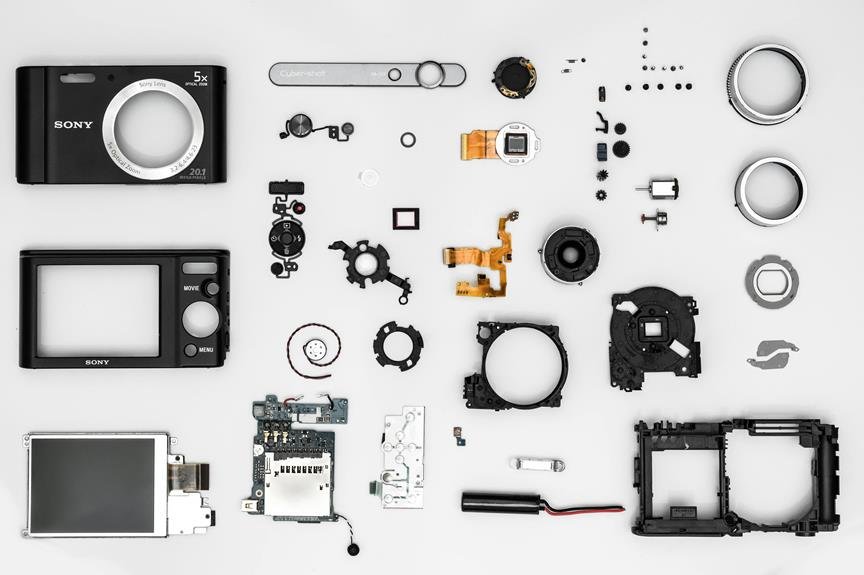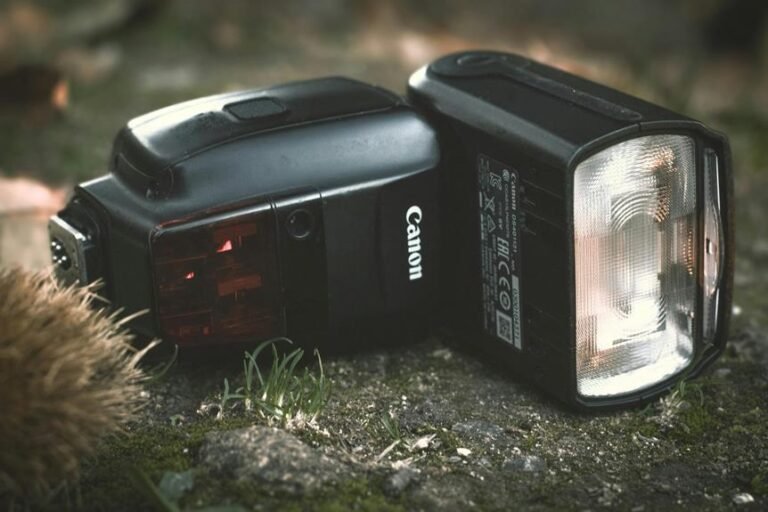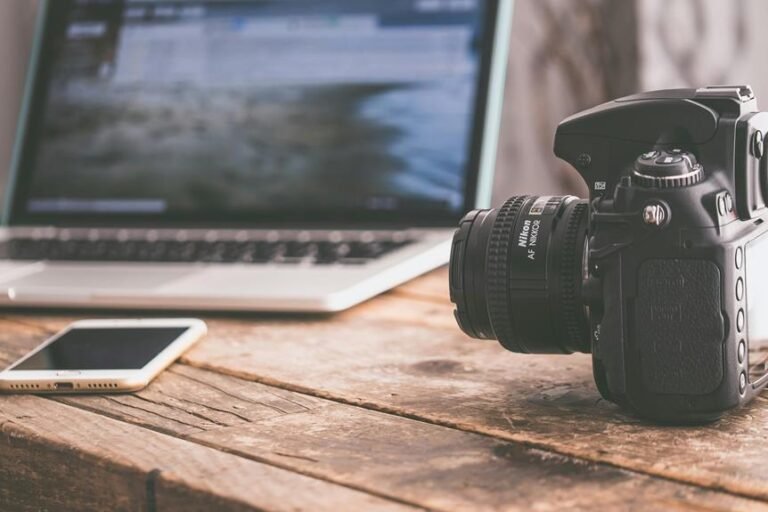Camera Lens Mechanics: Understanding Basics
Understand the lens mechanics: Aperture controls light, exposure, and depth of field. Focal length determines magnification and angle of view. Lens construction affects sharpness and distortion with glass elements. Autofocus swiftly adjusts for focused, sharp images. Optical stabilization reduces blur for stable shots. Further on are lens coatings, zoom vs. prime lenses, and depth of field intricacies.
A Quick Overview
- Aperture controls light, exposure, and depth of field, which are essential for well-exposed images.
- Focal length determines magnification and angle of view, affecting depth perception.
- Lens construction impacts sharpness, clarity, and distortion, key considerations when choosing a lens.
- Autofocus swiftly adjusts for sharp images, improving focus accuracy and speed.
- Optical stabilization reduces blur by compensating for hand movements during shooting.
Lens Aperture
Understanding lens aperture is essential for capturing sharp and well-exposed images in photography. The aperture controls the amount of light entering the lens, affecting exposure.
It also plays a vital role in creating bokeh effects, where the background appears beautifully blurred. By adjusting the aperture size, you can control the depth of field in your images, allowing for creative exposure control and emphasizing your subject against a soft, dreamy background.
Focal Length
The focal length of a camera lens is an essential parameter that determines the magnification and angle of view in your photographs.
Depth perception, the ability to distinguish between objects at different distances, is influenced by the focal length.
Shorter focal lengths provide a wider angle of view and greater depth of field, while longer focal lengths result in a narrower angle of view and increased image magnification.
Lens Construction
Lens construction plays a pivotal role in determining the overall quality and performance of a camera lens. The arrangement and quality of glass elements within the lens affect image sharpness, clarity, and distortion. Additionally, the barrel design impacts durability and ease of use.
Understanding how these components interact can assist you in selecting a lens that best suits your photography needs. Glass elements and barrel design are crucial factors to take into account when evaluating lens construction.
Autofocus Mechanism
When capturing images, the autofocus mechanism in a camera lens plays a crucial role in achieving sharp and accurately focused photos. This mechanism guarantees focus accuracy by swiftly adjusting the lens elements to bring the subject into sharp relief. The speed performance of the autofocus system determines how quickly the camera can lock onto a subject, enabling you to capture fleeting moments with precision.
- Swiftly adjusts lens elements
- Guarantees focus accuracy
- Speeds up the focusing process
- Precision in capturing moments
- Enhances image sharpness
Optical Stabilization
In camera lens mechanics, achieving stability in image capture is essential for reducing blur caused by hand movements. Optical stabilization systems help in motion blur reduction by compensating for small vibrations during handheld shooting techniques.
Lens Coatings
Regarded as an essential component in enhancing optical performance, lens coatings play a significant role in improving image quality and reducing undesirable effects caused by reflections and glare. These coatings include:
- Anti-reflective coatings
- UV protection
Zoom Vs. Prime Lenses
Zoom and Prime lenses are two distinct types of camera lenses with different characteristics and functionalities that cater to various photography needs. Zoom lenses offer versatility by allowing you to adjust focal length, providing convenience in framing shots.
However, Prime lenses typically offer superior image quality due to their simpler design. While Prime lenses excel in image quality, Zoom lenses offer flexibility and convenience, each with its pros and cons.
Depth of Field
Depth of field in photography refers to the range of distances within a scene that appear acceptably sharp in an image.
Understanding depth of field is essential for creating visually appealing photographs.
Bokeh effects can be achieved by manipulating depth of field.
Different focusing techniques impact depth of field.
Aperture size plays a significant role in determining depth of field.
Depth of field can be used creatively to draw attention to specific subjects in an image.
Frequently Asked Questions
Can I Use a Full-Frame Lens on a Crop Sensor Camera?
Yes, you can use a full-frame lens on a crop sensor camera. However, due to the crop factor, the effective focal length will be longer. This can be advantageous for achieving a tighter shot but consider the impact on your composition.
How Do I Clean the Inside of a Camera Lens?
To clean the inside of a camera lens, use a blower to remove loose dust particles. Avoid moisture buildup by storing equipment in a dry place with silica gel packs. For stubborn dirt, consult a professional technician.
Will Using a UV Filter Affect Image Quality?
Using a UV filter can slightly impact image quality by introducing potential lens flare and reducing sharpness. However, it offers protection against scratches and dust. Consider high-quality filters or alternatives like lens hoods for best results.
Can I Manually Override Autofocus on a Lens?
Yes, you can manually override autofocus on a lens, but it depends on the specific lens model and camera body. Confirm lens compatibility for manual override functionality. Refer to your camera manual or lens specifications for guidance.
Is It Possible to Repair a Scratched Lens Element?
Yes, it is possible to repair a scratched lens element. Depending on the depth and severity of the scratch, various methods like polishing or replacing the affected element can restore your camera lens to peak functionality.







